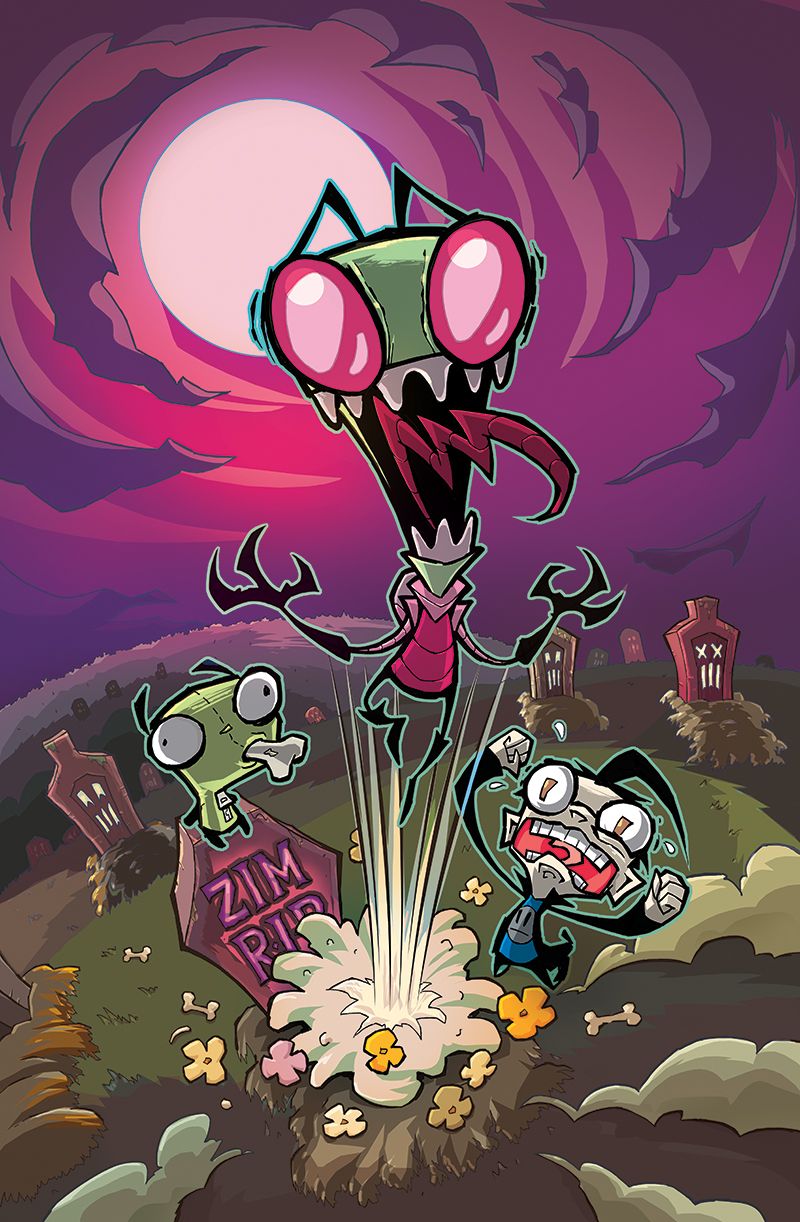Any reader who misses Zim -- one of Nickelodeon's most original and entertaining cartoon character -- will be pleased to hear that Jhonen Vasquez, creator of "Invader Zim" and originally a comic creator himself, has successfully ported the concept and the tone of the show to the sequential page in the debut issue of this series. Vasquez captures the absurd tonal shifts and offbeat comedy that made the original so successful. Aaron Alexovich and Megan Lawton work together to create a continuity of visuals, faithfully capturing the angular designs and strange technology developed by the creator 15 years ago.
The sequel creates a clever meta-commentary on the state of the Zim universe. Dib has been waiting patiently for Zim's return for what feels like years, to the point that he has become a putrid mess of a person, monitoring Earth for any activity to prove the alien's return. Zim heads back to screens with half the production value he once had -- strobe lights and sprinklers to signal a dramatic return to the scene -- and the rivalry begins anew. Vasquez keeps the scope narrow in this issue, focusing on the back-and-forth between Zim and Dib and see-sawing the scenes between their two homes, allowing new and old readers to establish the important character relationships before blowing the scope wide open with the end of the issue. Vasquez revels in Zim's seriousness, using it to create whiplash shifts in tone as his galactic-scale bragging is immediately cut off by something ridiculous, like GIR shooting his poodle into space or declaring the ultimate solution to Earth's capture is Dib's destruction.
Alexovich, Lawton and colorist Simon "Hutt" Troussellier capture the proper visual shifts in these moments with proper dramatic perspective choices and menacing mood lighting that pops back to flatter, standard shots and lighting to allow the script to take center stage and let the punchline hit harder.
Dib's journey back from grossness is a useful storytelling tool to show readers his determination to stop Zim. Through his training montage, with music sung by himself as he trains, Dib works so hard to remove the chair that has glued itself to him in his putridness that he becomes a hulking mass of power, waiting out his overtraining until he is back at the place he's comfortable before confronting Zim. Alexovich and Lawton have fun giving Dib these extremes in the book; his gross design and his power design are disgusting on opposite ends of the spectrum. It's a great opportunity for comedy but it's also true to the character and shows that he's not just all talk. It's also a good example of the storytelling in this series; there are no middle shades in "Invader Zim," and everything swings wildly from one end of the spectrum to the other with breakneck speed.
Though the short-lived animated series is sorely missed, "Invader Zim" #1 is a welcome return and an accessible jumping on point for anyone who has heard of it or is interested to learn more. It's an all-ages affair that is entertaining for any reader, as it doesn't speak down to its audience. Here's hoping that Vasquez sticks with the series for a while and we get more issues than we did episodes.

